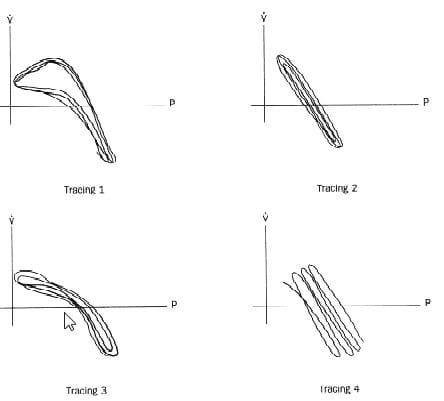Exam Details
Exam Code
:RPFTExam Name
:Registry Examination for Advanced Pulmonary Function TechnologistsCertification
:Test Prep CertificationsVendor
:Test PrepTotal Questions
:111 Q&AsLast Updated
:Apr 13, 2025
Test Prep Test Prep Certifications RPFT Questions & Answers
-
Question 81:
During a bronchial provocation study, a patient has the following spirometric values after a 0.25 mg/mL dose of methacholine:

Based on these results, a pulmonary function technologist should
A. Instruct the patient to blow out longer and repeat the effort.
B. Stop the test and immediately administer a bronchodilaior.
C. Instruct the patient to blow out harder and repeat the effort.
D. Reduce the concentration of methacholine on the next trial.
-
Question 82:
Which of the following is a valid reason for using biologic controls for DLCo?
A. Establishing precision of the procedure
B. Identifying the source of gas analyzer error
C. Assessing accuracy of the volume measuring device
D. Determining the lower limit of normal values
-
Question 83:
A treadmill belt stops for a fraction of a second each time the patient takes a step. A pulmonary function technologist should
A. Instruct the patient to use the hand rails.
B. Tighten the belt.
C. Increase the speed of the belt.
D. Decrease the treadmill grade.
-
Question 84:
Which of the following problems may be identified by using an isothermal lung analog to perform quality control on a body plethysmograph?
1.
Improperly calibrated mouth pressure transducer
2.
Obstructed or perforated pneumotachometer
3.
Increase in mechanical resistance
4.
Malfunctioning box pressure transducer
A. 3 and 4 only
B. 2 and 3 only
C. 1 and 4 only
D. 1 and 2 only
-
Question 85:
The following values are obtained using a 3-liter calibration syringe during volume calibration of a dry-rolling spirometer:
2.80 L
2.79 L
2.82 L The performance of this spirometer is best described as
A. Neither accurate nor precise.
B. Both accurate and precise.
C. Precise, but not accurate.
D. Accurate, but not precise.
-
Question 86:
Pulmonary function tests performed on a patient with tracheal stenosis may demonstrate increased
A. SVC.
B. Static compliance.
C. Raw.
D. FIF50.
-
Question 87:
During exercise, a subject's oxygen consumption increases out of proportion to his cardiac output. This is due to an increase in:
A. Anaerobic metabolism
B. Alveolar ventilation
C. Coronary blood flow
D. Oxygen extraction
-
Question 88:
A 35-year-old healthy male is performing a maximal stress test as part of an annual physical. The following data are observed:

The patient denies any symptoms. Which of the following should a pulmonary function technologist do first?
A. Obtain an arterial blood gas while continuing exercise
B. Move the pulse oximeter sensor to another site
C. Administer oxygen at 3-4 L/min by nasal cannula
D. Terminate the test and stabilize the patient.
-
Question 89:

Which of the above patterns illustrates the effect of increasing temperature in the plethysmograph during airways resistance measurement?
A. 4
B. 3
C. 2
D. 1
-
Question 90:
The following data are observed during an exercise test:

Which of the following should a pulmonary function technologist do?
A. Continue the test until the patient is symptomatic.
B. Discontinue the test and ensure patient safety.
C. Discontinue the test after the next stage.
D. Continue the test until the patient reaches maximal tolerance.
Related Exams:
AACD
American Academy of Cosmetic DentistryACLS
Advanced Cardiac Life SupportASSET
ASSET Short Placement Tests Developed by ACTASSET-TEST
ASSET Short Placement Tests Developed by ACTBUSINESS-ENVIRONMENT-AND-CONCEPTS
Certified Public Accountant (Business Environment amd Concepts)CBEST-SECTION-1
California Basic Educational Skills Test - MathCBEST-SECTION-2
California Basic Educational Skills Test - ReadingCCE-CCC
Certified Cost Consultant / Cost Engineer (AACE International)CGFM
Certified Government Financial ManagerCGFNS
Commission on Graduates of Foreign Nursing Schools
Tips on How to Prepare for the Exams
Nowadays, the certification exams become more and more important and required by more and more enterprises when applying for a job. But how to prepare for the exam effectively? How to prepare for the exam in a short time with less efforts? How to get a ideal result and how to find the most reliable resources? Here on Vcedump.com, you will find all the answers. Vcedump.com provide not only Test Prep exam questions, answers and explanations but also complete assistance on your exam preparation and certification application. If you are confused on your RPFT exam preparations and Test Prep certification application, do not hesitate to visit our Vcedump.com to find your solutions here.